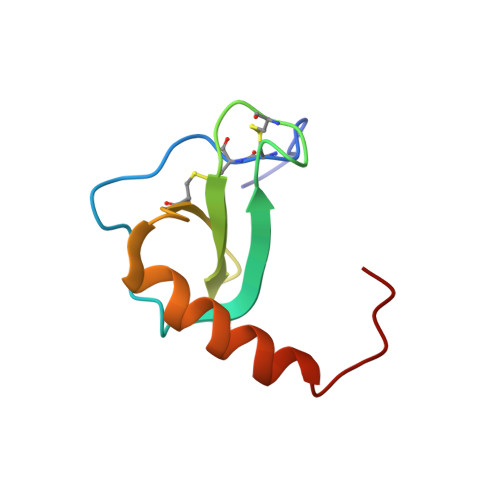Solution Structure of CCL19 and Identification of Overlapping CCR7 and PSGL-1 Binding Sites.
Veldkamp, C.T., Kiermaier, E., Gabel-Eissens, S.J., Gillitzer, M.L., Lippner, D.R., DiSilvio, F.A., Mueller, C.J., Wantuch, P.L., Chaffee, G.R., Famiglietti, M.W., Zgoba, D.M., Bailey, A.A., Bah, Y., Engebretson, S.J., Graupner, D.R., Lackner, E.R., LaRosa, V.D., Medeiros, T., Olson, M.L., Phillips, A.J., Pyles, H., Richard, A.M., Schoeller, S.J., Touzeau, B., Williams, L.G., Sixt, M., Peterson, F.C.(2015) Biochemistry 54: 4163-4166
- PubMed: 26115234
- DOI: https://doi.org/10.1021/acs.biochem.5b00560
- Primary Citation of Related Structures:
2MP1 - PubMed Abstract:
CCL19 and CCL21 are chemokines involved in the trafficking of immune cells, particularly within the lymphatic system, through activation of CCR7. Concurrent expression of PSGL-1 and CCR7 in naive T-cells enhances recruitment of these cells to secondary lymphoid organs by CCL19 and CCL21. Here the solution structure of CCL19 is reported. It contains a canonical chemokine domain. Chemical shift mapping shows the N-termini of PSGL-1 and CCR7 have overlapping binding sites for CCL19 and binding is competitive. Implications for the mechanism of PSGL-1's enhancement of resting T-cell recruitment are discussed.
Organizational Affiliation:
†Department of Chemistry, University of Wisconsin-Whitewater, 800 West Main Street, Whitewater, Wisconsin 53190, United States.














